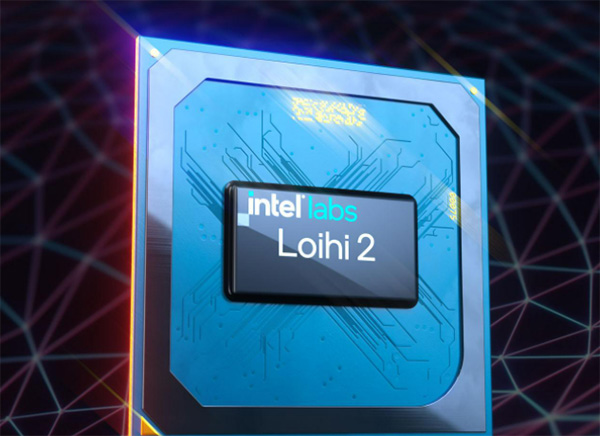Intel adds open software framework to accelerate developer innovation and path to commercialization.
Intel has introduced Loihi 2, its second-generation neuromorphic research chip, and Lava, an open-source software framework for developing neuro-inspired applications. Their introduction signals Intel’s ongoing progress in advancing neuromorphic technology.
Neuromorphic computing, which draws insights from neuroscience to create chips that function more like the biological brain, aspires to deliver orders of magnitude improvements in energy efficiency, speed of computation and efficiency of learning across a range of edge applications: from vision, voice and gesture recognition to search retrieval, robotics, and constrained optimization problems.
Applications Intel and its partners have demonstrated to date include robotic arms, neuromorphic skins and olfactory sensing.
The research chip incorporates learnings from three years of use with the first-generation research chip and leverages progress in Intel’s process technology and asynchronous design methods.
Advances in Loihi 2 allow the architecture to support new classes of neuro-inspired algorithms and applications, while providing up to 10 times faster processing1, up to 15 times greater resource density2 with up to 1 million neurons per chip, and improved energy efficiency.
Benefitting from a close collaboration with Intel’s Technology Development Group, Loihi 2 has been fabricated with a pre-production version of the Intel 4 process, which underscores the health and progress of Intel 4. The use of extreme ultraviolet (EUV) lithography in Intel 4 has simplified the layout design rules compared to past process technologies. This has made it possible to rapidly develop Loihi 2.
The Lava software framework addresses the need for a common software framework in the neuromorphic research community. As an open, modular, and extensible framework, Lava will allow researchers and application developers to build on each other’s progress and converge on a common set of tools, methods, and libraries. Lava runs seamlessly on heterogeneous architectures across conventional and neuromorphic processors, enabling cross-platform execution and interoperability with a variety of artificial intelligence, neuromorphic and robotics frameworks. Developers can begin building neuromorphic applications without access to specialized neuromorphic hardware and can contribute to the Lava code base, including porting it to run on other platforms.
Loihi 2 and Lava provide tools for researchers to develop and characterize new neuro-inspired applications for real-time processing, problem-solving, adaptation and learning. Notable highlights include:
Faster and more general optimization: Loihi 2’s greater programmability will allow a wider class of difficult optimization problems to be supported, including real-time optimization, planning, and decision-making from edge to datacenter systems.
New approaches for continual and associative learning: Loihi 2 improves support for advanced learning methods, including variations of backpropagation, the workhorse algorithm of deep learning. This expands the scope of adaptation and data efficient learning algorithms that can be supported by low-power form factors operating in online settings.
Novel neural networks trainable by deep learning: Fully programmable neuron models and generalized spike messaging in Loihi 2 open the door to a wide range of new neural network models that can be trained in deep learning. Early evaluations suggest reductions of over 60 times fewer ops per inference on Loihi 2 compared to standard deep networks running on the original Loihi without loss in accuracy3. Loihi 2 addresses a practical limitation of Loihi by incorporating faster, more flexible, and more standard input/output interfaces.
Seamless integration with real-world robotics systems, conventional processors, and novel sensors: Loihi 2 addresses a practical limitation of Loihi by incorporating faster, more flexible, and more standard input/output interfaces. Loihi 2 chips will support Ethernet interfaces, glueless integration with a wider range of event-based vision sensors, and larger meshed networks of Loihi 2 chips.
Intel currently offers two Loihi 2 based neuromorphic systems through the Neuromorphic Research cloud to engaged members of the INRC: Oheo Gulch, a single chip system for early evaluation and Kapoho Point, an eight-chip system that will be available soon. The Lava Software Framework is available for free download on GitHub. A presentation and tutorials on Loihi 2 and Lava will be featured at the upcoming Intel Innovation event in October.

